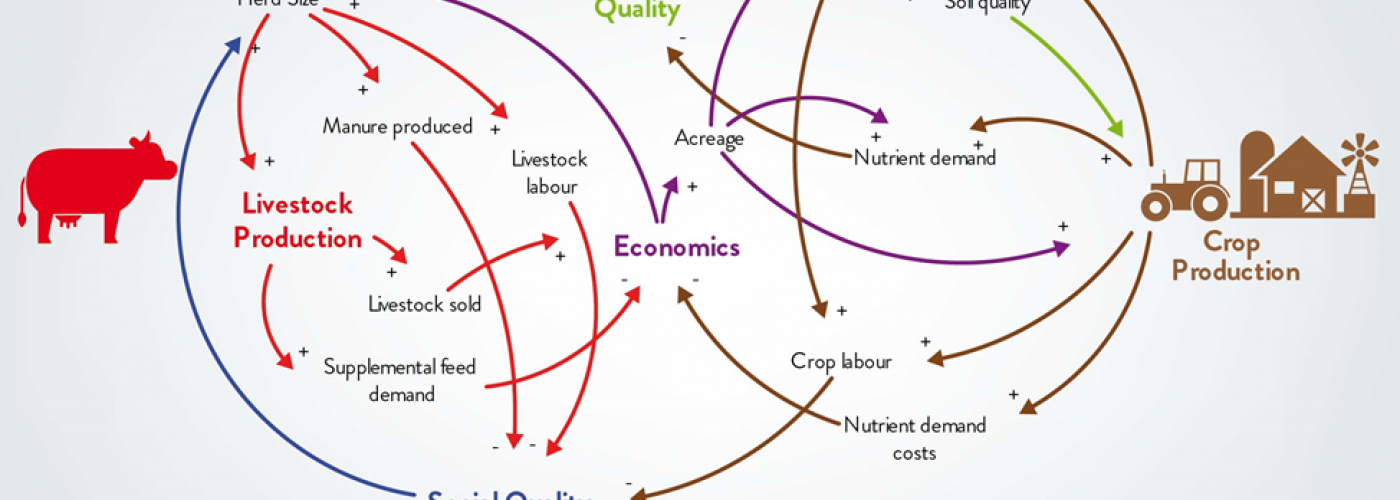What is a Causal Loop Diagram and What is it Good For?
Image

Information about the Causal Loop Diagrams (CLDs) was originally shared in the Local Systems Practice User's Guide. This Guide shares learnings on how Local Works missions and local organizations can apply a systems lens to development.
Causal Loop Diagrams (CLDs) are used to conceptually model dynamic systems in a holistic manner, mapping how variables (i.e., factors, issues, processes) influence one another. These diagrams are particularly useful in uncovering a system’s underlying feedback structures, and in identifying high and low leverage intervention points in a system. These diagrams also reveal the natural constraints within the system, helping us develop more realistic expectations regarding our ability to bring about change. Read more about CLDs in the Local Systems Practice Users' Guide.
A Causal Loop Diagram (CLD) is:
- A causal loop diagram is a "snapshot of all relationships that matter." It is a visual representation of key variables (i.e., factors, issues, processes) and how they are interconnected.
- These diagrams show variables represented as texts and causal relationships between them represented as arrows. Arrows indicate the direction of causality, the nature of the relationships (i.e., proportional or inverse), and whether there is any delay in an expected effects’ occurrence.
What makes a Causal Loop Diagram a 'Systems' tool?
- Causal loop diagrams address the core principle of systems thinking: One cannot understand an issue or its constitutive parts (factors, actors, processes) in isolation. In a system, everything is related to everything else. The relationships (and not the parts themselves) drive the outcomes and behaviors we want to understand. Without understanding these relationships, and if necessary modifying them, we cannot possibly change outcomes/behaviors in a lasting manner. However, it is not easy to identify and account for these relationships.
- In complex systems, cause-effect relationships are often separated by time and space, making connections obscure. Additionally, the sheer number of connections between causes and effects as well as across causes themselves challenge the abilities of normal language and the human mind, both of which are more suited to account for the limited number of relationships at a time. Yet, while each relationship is individually important, it is the collective impact these relationships have on a system that shapes the outcomes/behaviors we want to understand.
- By providing a snapshot of all relationships that matter on a single sheet, CLDs allow us to gain a “big picture” perspective on a problem; that is, we can see the processes through which different parts (factors, actors, and processes) interact to generate a problem, or how a problem interacts with its broader environment. This is the first step in adapting a systems perspective and avoiding the common analytic tendency to see things in isolation. It is important to note that CLDs represent a tool for continued system analysis, and not the end product of the effort itself. Ideally, developing a CLD that accurately portrays the system being studied will yield insights that further the analysis and deepen the user’s understanding of the relevant causes and effects.

